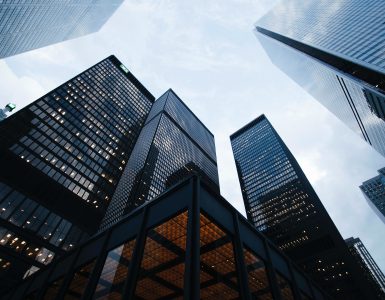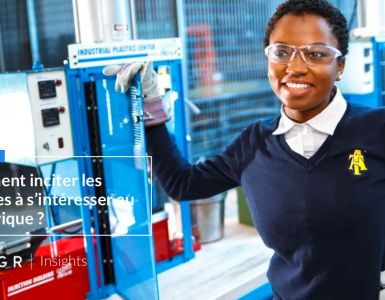Unlike machining , which consists of starting from a block of raw material and removing material until the desired part or shape is obtained, 3D printing will start from scratch and add material layer by layer until the desired object is obtained. This process happens without using a mold or any other process beforehand.
Below are seven major processes of additive manufacturing, each with distinct characteristics.
Material extrusion
This process consists of depositing material (in a liquid or semi-liquid state) with a nozzle. The material will turn to a solid state once it is deposited. Objects are built by superimposing several layers of solidified lines.
This process is the most widespread. This is because it is relatively safe even in an office environment, while the raw material is inexpensive and varied. This allows users to print large objects that have good mechanical properties. On the other hand, the method is one of the slowest, and it has a rough surface finish and below average tolerances.
This makes extrusion an ideal candidate for hobbyists, schools or FabLabs, and companies that want to create prototypes, mock-ups, or jigs at low cost.
Vat Photopolymerization
This process includes Stereolithography (SLA), Digital Light Processing (DLP) and Continuous Liquid Interface Production (CLIP). The principle is to use a light source to solidify the resin contained in a vat.
This method is the second most common and is relatively affordable. It is also one of the two that can be used in an office environment (along with extrusion). Using light over an entire surface ensures excellent accuracy, a smooth surface finish with tight tolerances, lower time spent in post-processing, and a reduction in print time. However, the raw material is highly toxic, which is why it is vital to follow safety protocol while using this technology. In addition, the maximum print size tends to be smaller than with other processes, and post-processing operations must be performed to prevent the part from degrading due to light and air exposure.
Vat Photopolymerization is, therefore, a prime candidate in the dental industry, for art objects (jewelry, figurines, etc.), or for small prototypes or replacement parts that require a high level of precision.
Powder bed fusion
This process starts with a powder bed, which will be selectively melted by a beam of energy, such as a laser or an electron beam.
This process allows for very high-precision parts (tight tolerances) and excellent mechanical properties both in metal or plastic. The downside is a generally high cost. The powder used in this process must be very small and the particles must be similar in shape and size. This, in turn, makes the raw material and the printer itself very expensive. Titanium powder can sell for $800 per kg, for example.
Both the powder and the printer pose a risk to human health. The powder and parts must be carefully cleaned before they can be used while the intense heat from the laser might require a closed environment to avoid any risk of explosion. Powder recycling systems tend to become a requisite and increase the overall cost of the printer system.
Powder bed fusion, however, remains the most mature process for metal. This makes it the process of choice for the aeronautical or medical sectors, which require high quality parts and can afford to have expensive parts.
Binder jetting
This process uses two materials: a powder bed and a binder agent. A thin layer of powder is first deposited and selectively bound by a binder material. The binder is deposited in a similar way than in inkjet printers. The binder may be heated in some cases to improve adhesion or baked in a post-treatment phase.
This process is one of the fastest and allows to obtain parts with good tolerances and good mechanical properties. However, the powder remains somewhat expensive, the printer also requires a powder recycling system, and the finish can remain rough (sandy).
Material Jetting
The idea behind these printers is the same as that of inkjet printers. The printer will selectively project a jet of resin, molten metal or other materials. The material will instantly solidify through light curation or simply due to the thermal difference.
The jet of liquid material makes it possible to obtain objects with a good finish and good tolerances. It is also possible to vary the colors or even the materials within the same object for advanced prototyping. The process can also allow to “repair” broken or used parts, for instance by restoring the blades of a turbine. However, printers are expensive and the materials can pose a risk to human health.
Directed Energy Deposition
This process works like welding. The raw material is deposited in a solid state and a beam of energy (laser, electron) is used to melt it as it is deposited. This process makes it possible, among other things, to repair metal objects (e.g., turbine blades).
This process makes it possible to manufacture or repair very large metal objects. However, the machines are very expensive and there is a trade off between tolerances, speed are size. These printers are not as widely available as powder bed fusion.
Sheet lamination
This process consists of superimposing sheets of various materials (e.g., metal, plastic, paper, etc.) and joining them together (by ultrasound in the case of metal or binding in the case of cardboard or plastic). The sheet is then cut in the desired shape using standard subtractive manufacturing methods (e.g., milling). The 3D object is made by superimposing these sheets on each other.
This process, however, is fairly new and not as widely used as some of the other 3D printing options.
Synthèse
Each process comes with its peculiarities, strengths, and weaknesses. In addition, even printers using the same technology can vary widely in terms of tolerance, volume, speed, and cost depending on the application.
The following table summarizes the characteristics of some commercially available printers:
* “The cost of golf ball” is the price of a quote to a professional printing service to print a golf ball with the given printer.
**The price, therefore, reflects the cost of the raw material, the cost of labor and post-processing, the depreciation of the printer, and the profit margin for the service.
***All submissions were made with 316L stainless steel in the case of metal, nylon for plastics (enriched with carbon fiber in the case of Markforged ©) and polyurethane for resins.
3D printing, by eliminating the constraints of tools or demolding, makes it possible to manufacture virtually any object. This is one of the greatest strengths of the technology. Additive manufacturing is recognized for its ability to produce tailor-made objects at low costs, locally, on demand and with limited human interaction.
However, it has its weaknesses. While set-up times are close to zero, the actual manufacturing remains long. In some cases, the post-processing can be as long or even longer than the printing itself.
Moreover, since 3D printing is still relatively new, it can be difficult to find qualified people to operate printers or design parts that take advantage of the benefits of this technology. This trend is bound to change, as we see that many countries are starting to integrate 3D printing into their academic curriculum.
The technology does not offer any gains by increasing quantity: the time and price will remain the same per object, whether one object or tens of thousands are printed. The available materials are also a constraint: not all materials can be printed in 3D, and the price is sometimes significantly high, especially for metals. Finally, characterization of the mechanical properties of printed objects is still ongoing, so these object might not yet be fit for critical applications.
3D printing is not, by any means, meant to replace all other manufacturing processes. It is, instead, a new tool accessible to factories that have certain specific needs. Like any tool, you need to know when to use it and when another tool is better suited for a specific need. If used well, additive manufacturing can provide benefits in terms of cost reduction, time reduction or quality improvement.







